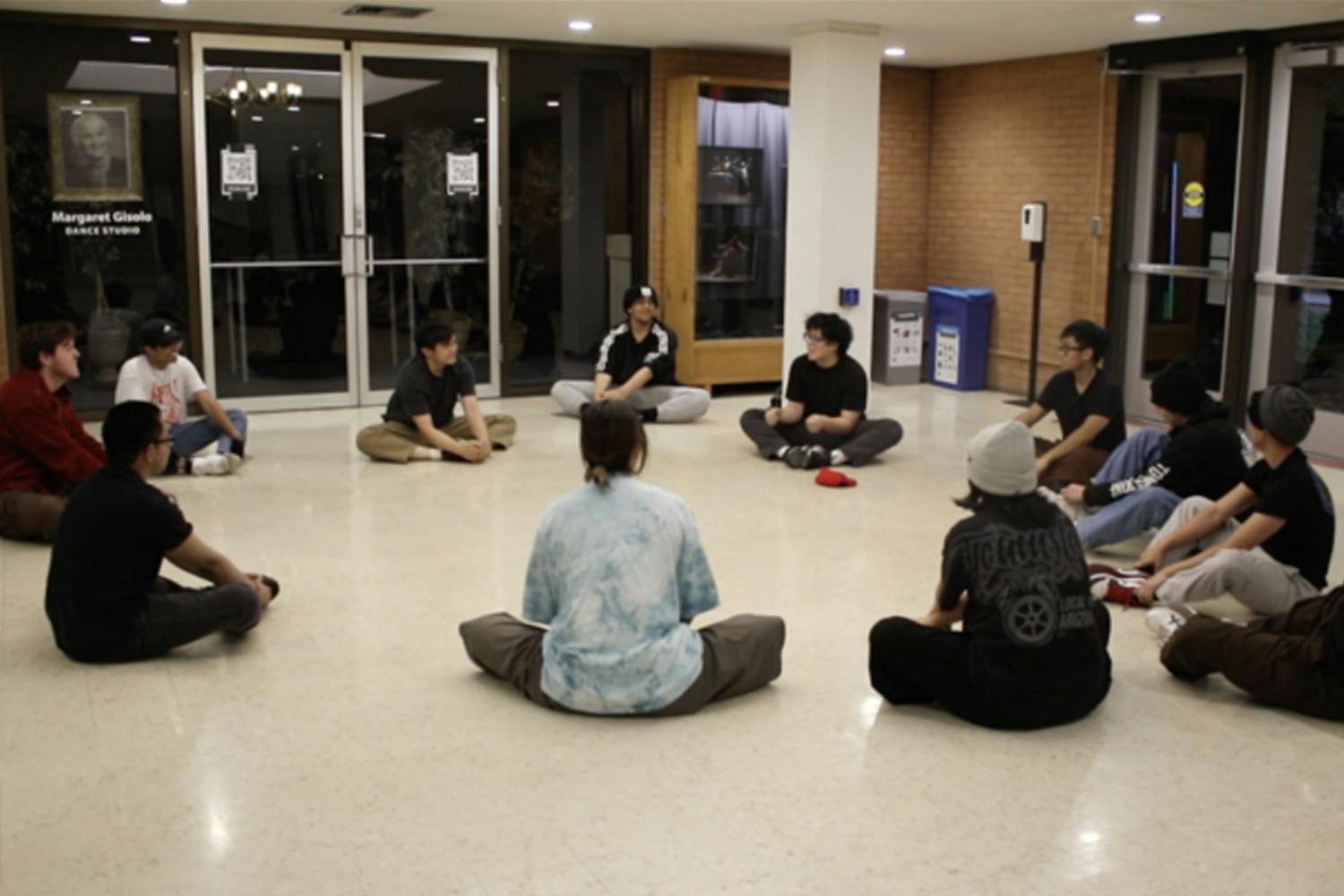Science and technology reporter, Maya Shrikant sits down with the new executive director of the Swette Center for Sustainable Foods Systems, Kathleen Merrigan. Is food waste really an issue? According to the Food and Agriculture Organization, if food waste were a country it would be the third largest country in terms of green house gas emissions. Kathleen shares what her plans are to reshape the face of ASU's food sustainability practices as well as what can be done by students and faculty to cut down on their own footprint.
Maya Shrikant:
My name is Maya Shrikant. I’m a science and technology reporter for The ASU State Press and today we're sitting down talking to Kathleen Merrigan who’s a PhD and the new executive director for the Swette Center for Sustainable Food Systems as well as a Kelly and Brian Swette Professor of Sustainable systems. Hi, how are you today?
Kathleen Merrigan:
I’m great! So glad to talk to you.
Maya Shrikant:
I'm glad to talk to you as well. So, we'll get right into the questions. The first one being, what are your goals for food systems sustainability here at ASU as sort of overarching director of this new center campus?
Kathleen Merrigan:
Well, I really hope that it becomes a hub for transdisciplinary research and education. Meaning not one school, not one discipline, not one nature. From what I can tell, being very new at ASU, a recent Sun Devil if you will, there is a lot of energy and excitement around food systems across the campus. I've been in discussions with colleagues over in the nutrition department on the Phoenix campus. I've talked to people doing great work at the Poly campus. I am very much dealing with colleagues at the Morrison School of Agribusiness. So really, I think the Swette Center provides us opportunity to connect the dots, build on the synergies that already exists and take it from there.
Maya Shrikant:
And so you sort of mentioned like this interdisciplinary approach, so is that one of the ways that you're planning on attacking this sort of sustainable food system project at ASU? Do want to sort of incorporate all those together? You've mentioned a couple of the departments and centers already existing ASU, but could you talk a little bit more in depth about how using resources are available on campus?
Kathleen Merrigan:
Sure, so one of my favorite parables, and you may know this one, is about the blind men and the elephant. And it's about if you can't see the whole of the animal and you need to describe it, the person that's feeling the trunk, versus someone feeling the tail, versus someone who's feeling the leg, they all describe a very different animal. And, to me, that parable really describes the longstanding problem in sciences in terms of delivering solutions. I really do think that you need people from diverse perspectives coming together to achieve the sustainable development goals that we have set out for the globe and of course which ASU holds dear. So I will be working with colleagues and students across the University space. Initially one of the things I'll be working on is degree programs. I'm hoping that in short time we'll be able to offer a certificate in food policy and sustainability leadership. It would be offered at the graduate level of 15 credit certificate program, and I'm working with colleagues across the university and developing a master’s of science in sustainable food systems and a bachelor’s of science in sustainable food systems. Those will be organized out of the school of sustainability, but there's a lot of great faculty in curricula materials out there that are outside of this one school. So that will be one of the first adventures I'll be on here at ASU that will require me to reach out widely.
Maya Shrikant:
Okay. And so where do you see the most improvement needed in terms of either sustainability as a whole or relative to food systems here?
Kathleen Merrigan:
So many meetings I go to both nationally internationally begin with this statement. The food system is broken. And while many believe that, I don't think that's a winning way to start any meeting. It's not inspiring. It’s not solution oriented, and what really attracted me to ASU was that fact it's number one in innovation. “Solutions” is in the name of colleges, departments, collaboratories. “Solutions” is just a hallmark word here at ASU, and I think it's more than a word. I think it's a mindset. It's a culture. I remember back when I taught at Tufts I would assign my very talented graduate students a paper assignment, and I get the results back at the end of the semester and 80 percent of the paper would be about the problem and maybe 20 percent about the solution. And it took me some time to realize I had to set up a rule that at least 50 percent of the paper had to be about solutions. Clearly, you can't design solutions if you don't understand the underlying problems, but sometimes we think we get stuck in the problem statement, right? The food system is broken. I want to talk about how the food system can be unleashed to do great things.
Maya Shrikant:
So where do you think the solutions lie or where should the solutions be headed for ASU in terms of our footprint as a food system? We sort of have this little mesocosm right here on campus where we take up so much food, and we use so much food, and we’re recycling so much food. Where do you think the solutions within our sort of ASU system lie?
Kathleen Merrigan:
See, I don’t think I’m quite qualified to speak to that yet, having just joined the University. But, all of us should be thinking about what we put on our plate and how that reflects back to what the land can produce sustainably. Many of us recognize that means a different design of the place where you do not have meat protein center stage, meal after meal. That's just not sustainable. I think in Arizona it's really interesting I'm learning more about agriculture here. I spent my whole career in food and agriculture, but this is my first time about to live in Arizona. And I'm trying to learn what it is, not just the campus needs, but what are the state needs. So, I really am a student at this point for my new home to learn the kind of things to really be able to fully address your question.
Maya Shrikant:
And sort of my last question for you is that there's a lot of big ideas happening, and I think that the sort of the excitement towards this movement can be overwhelming, but how can students and faculty, or anyone wanting to get involved and make a difference in this movement, do something more on a small scale to contribute to this sort of awakening happening?
Kathleen Merrigan:
Get rid of the plastic water bottles, carry your own, eat less meat, Meatless Mondays is very popular on college campuses, think about wasted food, think about packaging, get engaged in a community garden, volunteer at a food bank, help in a farm to school program, eat at Engrained, eat at the little cafe that nutrition students have in the Phoenix campus. I mean I think there are so many ways. Even if food studies are not going to be your main focus, there are so many things individuals can do every day that make a difference. I recognize that major corporations in this country are shifting what they do — changing their politics, changing their policy priorities, because consumers, their customers, are saying we want change. So going to the grocery and thinking with a sustainability mindset when you make those purchases there is a feedback loop there. It could, one by one of us, you know as we all make our choices. It adds up and it makes a difference.
Maya Shrikant:
And lastly with all these changes taking place either now or in the future, how big of an impact could this shift in education, food policy and food research have on sort of a global scale?
Kathleen Merrigan:
Just think of food waste. FAO (Food and Agriculture Organization) did a report that said if wasted food were considered a country, it be the third largest country in the world in terms of its emissions and its impact. We weren't even talking about wasted food a few years ago. Think of gender. You know a report from the World Bank and FAO said the if women were given the same access to things like credit and education leadership positions, and here I'm thinking about women outside the U.S., food production would increase 30 percent, which is the equivalent of feeding 150 million people a day. So I think there are a lot of things that we know that we need to figure out how to act upon, and there are also a lot of things that we don't know. There's still a lot of important science that needs to bring about the kind of innovations we need in the food sector. Particularly knowing that we have a growing world population that we have to feed on less and less land, with less and less water.
Maya Shrikant:
Well we are so glad to have you here at ASU, and we’re so excited for the future of the Swette center. Thank you so much.
Kathleen Merrigan:
Thank you.
Follow Maya Shrikant on Twitter
Like and follow The State Press on Facebook and Twitter




